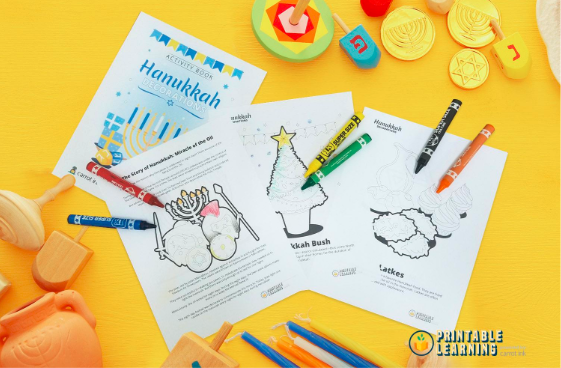
Every winter, Jews all over the world come together to celebrate Hanukkah or the Festival of Lights. Although Hanukkah is not one of Judaism’s High Holy Days, it has become one of the most beloved holidays. Hanukkah celebrates the victory of the Maccabees against the Seleucid Empire during the 2nd century BCE and the rededication of the Second Temple of Jerusalem after it was desecrated by Antiochus.
Hanukkah lasts for eight days to commemorate the miracle of the oil. It is said that the temple menorah contained only a tiny amount of oil when the Maccabees retook it but it miraculously lasted for eight days, giving the Jews enough time to make new oil. Today, Hanukkah is a joyous festival still steeped in tradition. Here are some Hanukkah traditions you shouldn’t miss.
Menorah – As a festival of lights, Hanukkah’s centerpiece is the lighting of the menorah, specifically the hanukkiyah. It is an nine-branched candelabra that holds eight candles for each night of the festival and one central candle called the shamash used to light all the others. The lighting of the menorah is a reminder of the miracle of the oil.
Latkes and Sufganiyot – As oil is one of the central themes of Hanukkah, many of the food served during the festival are cooked in oil. One of these is the latke, which are potato pancakes fried in oil. Latkes are often served with applesauce or sour cream. Another delicious Hanukkah staple are sufganiyot or jelly-filled donuts. These holiday snacks are best shared with family and friends during the eight-day festival.
Dreidel – One of the favorite pastimes for kids and adults alike during Hanukkah is playing the dreidel. It is a fun gambling game in which players take turn spinning a four-sided toy that is similar to a spinning top. Each player then follows the instructions on the side facing up when the dreidel stops. The game is usually played using tokens.
Hanukkah gelt – Literally “hanukkah money”, these are special chocolate candies that are wrapped in gold or silver foil to resemble coins and given to children. This tradition comes from an old practice of parents giving coins to their children for distribution to their teachers.

